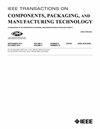基于稳定hippo的电路宏观建模
IF 3
3区 工程技术
Q2 ENGINEERING, ELECTRICAL & ELECTRONIC
IEEE Transactions on Components, Packaging and Manufacturing Technology
Pub Date : 2025-08-11
DOI:10.1109/TCPMT.2025.3597811
引用次数: 0
摘要
模拟电路的行为建模是集成电路设计流程中的一个重要步骤。事实上,闭盒行为建模允许用户在不明确知道设备内部工作原理的情况下复制电路元件和设备的行为。先前的工作已经在设备和电路级别使用机器学习(ML)自动生成行为模型。更具体地说,最近的一项工作使用高阶多项式投影算子(hippo)来增强基于门控循环单元(GRU)的宏观模型。这种新的基于hippo的模型已被证明优于最先进的基于gru的电路宏观模型。在本文中,我们介绍了一种使用HIPPO框架的新型改进循环神经网络(RNN)电路宏模型,称为HIPPO-RNN。此外,我们提出了一个改进的希波- rnn (stable-希波- rnn)模型,该模型更适合于执行输入到状态稳定性(ISS),并推导了相应的稳定性约束。这些约束有效地保证了暂态仿真过程中宏观模型的ISS稳定性。通过两个电路建模实例,验证了宏观模型的有效性和优越的性能。本文章由计算机程序翻译,如有差异,请以英文原文为准。
Stable HIPPO-Based Circuit Macro-Modeling
Behavioral modeling of analog circuits is an important step of the integrated circuit design flow. Indeed, closed-box behavior modeling allows users to replicate the behavior of circuit elements and devices without explicitly knowing the inner workings of the device. Prior works have automated the generation of behavioral models using machine learning (ML) at both the device and circuit level. More specifically, a recent work has used high-order polynomial projection operators (HIPPOs) to augment gated recurrent unit (GRU)-based macro-models. This new HIPPO-based model has been shown to outperform state-of-the-art GRU-based circuit macro-models. In this article, we introduce a new type of modified recurrent neural network (RNN) circuit macro-model that uses the HIPPO framework, called HIPPO-RNN. Additionally, we present a modified HIPPO-RNN (stable-HIPPO-RNN) model that is more suitable for enforcing input-to-state stability (ISS), and derive corresponding stability constraints. These constraints effectively guarantee ISS stability of the macro-model during transient simulation. We show the validity and superior performance of our macro-models on two circuit modeling examples.
求助全文
通过发布文献求助,成功后即可免费获取论文全文。
去求助
来源期刊

IEEE Transactions on Components, Packaging and Manufacturing Technology
ENGINEERING, MANUFACTURING-ENGINEERING, ELECTRICAL & ELECTRONIC
CiteScore
4.70
自引率
13.60%
发文量
203
审稿时长
3 months
期刊介绍:
IEEE Transactions on Components, Packaging, and Manufacturing Technology publishes research and application articles on modeling, design, building blocks, technical infrastructure, and analysis underpinning electronic, photonic and MEMS packaging, in addition to new developments in passive components, electrical contacts and connectors, thermal management, and device reliability; as well as the manufacture of electronics parts and assemblies, with broad coverage of design, factory modeling, assembly methods, quality, product robustness, and design-for-environment.
 求助内容:
求助内容: 应助结果提醒方式:
应助结果提醒方式:


